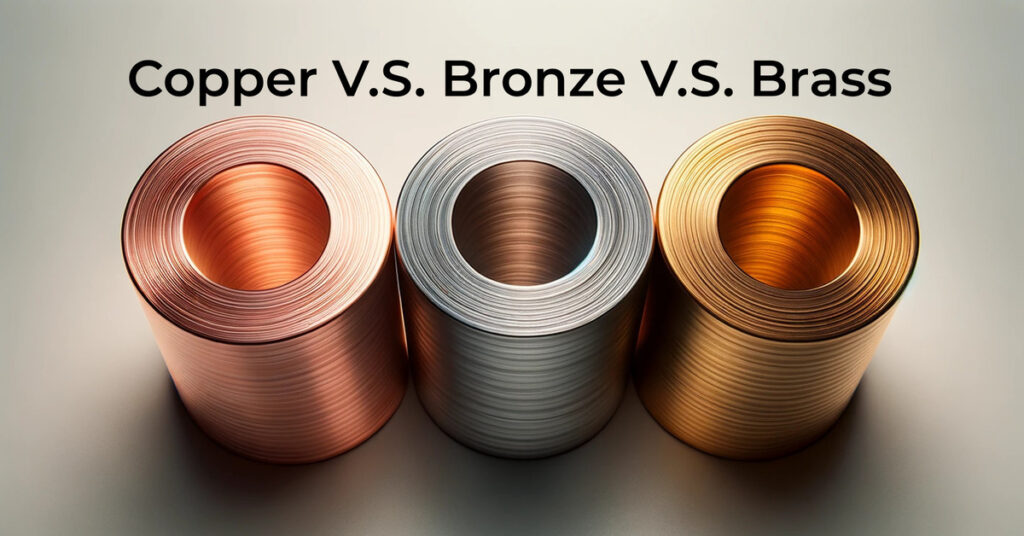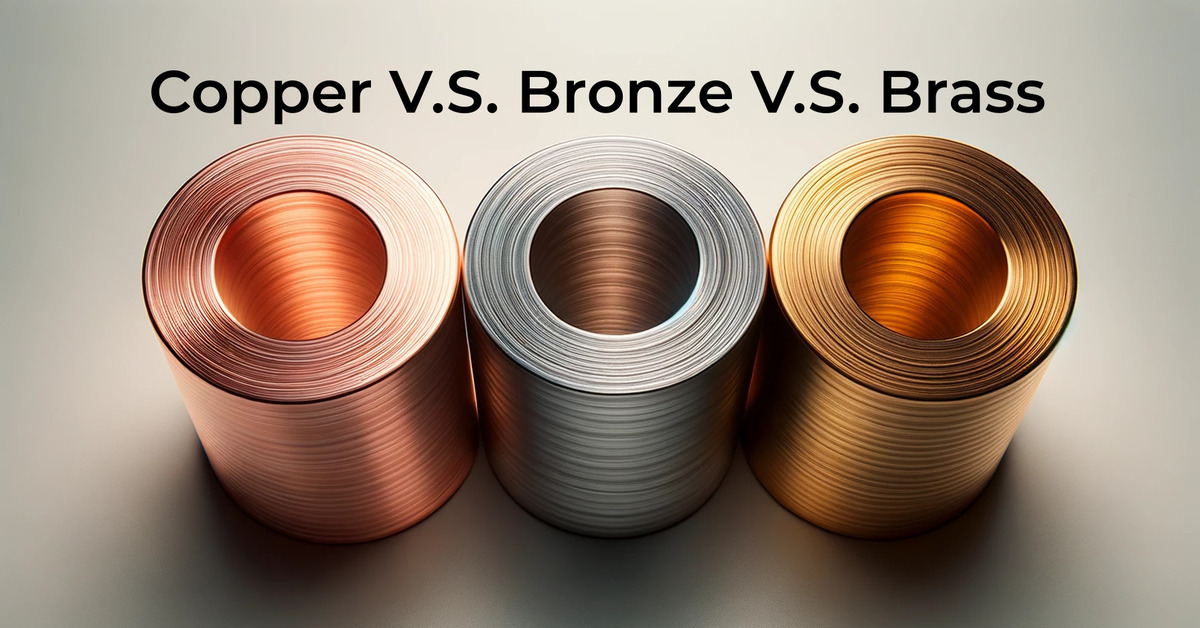Red Brass Vs Yellow Brass: 5 Key Differences Explained
Red brass and yellow brass are two types of brass alloys commonly used in various industries. Red brass has a higher copper content which gives it a reddish hue, while yellow brass contains more zinc, resulting in a yellowish color.
These alloys possess different physical and mechanical properties, making them suitable for different applications. Brass is an alloy composed of copper and zinc, and the amount of each metal determines the specific type of brass. Red brass, also known as copper alloy C23000, has a higher copper content (85-90%) and a lower zinc content (10-15%).
This composition gives red brass its reddish appearance. Yellow brass, also called copper alloy C26000, has a higher zinc content (30-40%) and a lower copper content (60-70%), giving it a yellow color. Red brass and yellow brass have distinct characteristics and are used in various industries, including plumbing, electrical, automotive, and musical instruments. Understanding the differences between these alloys can help in choosing the right material for specific applications.
Composition
The composition of Red Brass and Yellow Brass
Red Brass Composition
Red Brass is composed of copper and mostly zinc with a higher copper content.
Yellow Brass Composition
Yellow Brass consists of copper with zinc, and sometimes small amounts of lead.

Credit: at-machining.com
Color
When comparing Red Brass and Yellow Brass, one of the most notable differences between the two is their color. Understanding the distinctions in color can help you make an informed decision about which brass option is best suited for your specific needs.
Red Brass Color
Red Brass, sometimes referred to as American Bronze, has a warm reddish-brown hue. This distinctive color is derived from its higher copper content, which typically ranges from 85% to 90%. The addition of a small percentage of tin also contributes to the reddish tint. The rich and inviting shade of red brass makes it aesthetically pleasing and adds a touch of elegance to any application.
Yellow Brass Color
Yellow Brass, also known as Cartridge Brass or Rich Low Brass, possesses a bright yellow color that is highly valued in various industries. This vibrant color comes from its composition of approximately 60% to 70% copper and 30% to 40% zinc. The higher zinc content gives yellow brass its characteristic golden hue, making it an attractive choice for architectural accents, musical instruments, and decorative objects.
Corrosion Resistance
Corrosion resistance is a crucial factor to consider when choosing between red brass and yellow brass. Understanding the corrosion resistance of these two materials can help you make an informed decision for your specific application.
Red Brass Corrosion Resistance
Red brass, also known as copper alloy C23000, is an excellent choice when it comes to corrosion resistance. With a higher copper content compared to yellow brass, red brass exhibits superior resistance to corrosion, making it suitable for applications where exposure to moisture and harsh environments is a concern.
Yellow Brass Corrosion Resistance
Yellow brass, or copper alloy C26000, offers good corrosion resistance in most environments. However, its lower copper content compared to red brass makes it more susceptible to corrosion in certain conditions, such as exposure to acidic or alkaline substances. It is essential to assess the specific environmental factors to determine the suitability of yellow brass for a particular application.

Credit: www.xometry.com
Applications
When it comes to industrial applications, Red Brass and Yellow Brass serve various purposes due to their unique properties and characteristics. Let’s delve into the specific uses of each type of brass.
Uses Of Red Brass
Red Brass, also known as Gunmetal, is widely utilized in various industrial and commercial applications due to its exceptional durability and corrosion resistance. Its specific applications include:
- Manufacturing of valves and pipe fittings due to its high strength and corrosion resistance.
- Production of plumbing fixtures such as faucets, couplings, and pipe connectors.
- Used in the construction of musical instruments such as horns, tubas, and other brass instruments.
- Fabrication of pump components and water meter housings, where resistance to corrosion is vital.
Uses Of Yellow Brass
Yellow Brass, also known as Cartridge Brass, is another widely used material in various industrial and consumer applications due to its versatility and aesthetic appeal. Some of its common uses include:
- Manufacturing of musical instruments, including trumpets, trombones, and other brass instruments.
- Production of architectural hardware and decorative items such as doorknobs, handles, and ornamental fixtures.
- Used in the fabrication of electrical components, including electrical connectors and terminals due to its excellent conductivity.
- Applications in the automotive industry for the production of radiator cores, heat exchangers, and other components requiring corrosion resistance.
Strength And Malleability
HTML Format:When it comes to brass, two commonly used alloys are red brass and yellow brass. Both types have their own unique properties and applications. In this section, we will dive into the strength and malleability of these two alloys, giving you a clear understanding of their capabilities.
Strength Of Red Brass
Red brass, also known as low brass or gunmetal, is an alloy composed of approximately 85% copper and 15% zinc. This composition gives red brass its characteristic reddish hue. When it comes to strength, red brass is known for its exceptional durability. It offers high tensile strength, meaning it can withstand substantial forces without breaking or deforming.
Due to its strength, red brass is often used in applications that require reliability and resistance to wear and tear. It is commonly found in plumbing fittings, valves, and other mechanical components that need to withstand high-pressure conditions. Additionally, red brass is an excellent choice for musical instruments, such as trumpets and saxophones, as it can withstand the stresses of constant playing.
Strength Of Yellow Brass
Yellow brass, also known as high brass, is an alloy composed of approximately 65% copper and 35% zinc. This composition gives yellow brass its distinctive golden color. In terms of strength, yellow brass is known for its moderate strength and malleability.
Yellow brass offers good tensile strength, allowing it to withstand various forces without breaking. It is commonly used in applications that require both strength and flexibility. Yellow brass is often found in musical instruments like bells, horns, and cymbals due to its ability to produce beautiful and resonant sounds.
Furthermore, yellow brass is widely used in the production of decorative items, jewelry, and hardware. Its combination of strength and malleability make it a versatile alloy that can be easily shaped and formed into various intricate designs.
Cost
When considering Red Brass vs Yellow Brass, understanding the cost difference is crucial.
Cost Of Red Brass
Red Brass is slightly more expensive than Yellow Brass.
Cost Of Yellow Brass
Yellow Brass is generally more affordable compared to Red Brass.

Credit: at-machining.com
Frequently Asked Questions Of Red Brass Vs Yellow Brass
What Are The Main Differences Between Red Brass And Yellow Brass?
Red brass and yellow brass differ in their copper and zinc composition. Red brass contains a higher percentage of copper and is more resistant to corrosion, while yellow brass has a higher zinc content, making it more malleable and suitable for intricate designs.
Which Applications Are Suitable For Red Brass And Yellow Brass?
Red brass is commonly used in plumbing fittings, valves, and pump components due to its corrosion resistance. Yellow brass, on the other hand, is often used in musical instruments, jewelry, and decorative hardware, benefiting from its malleability and attractive appearance.
How Do The Color Variations In Red Brass And Yellow Brass Affect Their Use?
The distinctive color of red brass comes from its higher copper content, giving it a reddish tone. Yellow brass, with its higher zinc content, exhibits a bright yellow color. These variations not only impact aesthetics but also indicate the different properties and applications of each alloy.
Conclusion
When considering the choice between red brass and yellow brass, it is important to understand the differences in their composition and characteristics. Red brass is known for its higher copper content, making it more corrosion resistant and suitable for applications requiring durability.
On the other hand, yellow brass contains more zinc, offering a more cost-effective option for certain projects. Ultimately, the decision depends on the specific requirements and budget of the project at hand.





